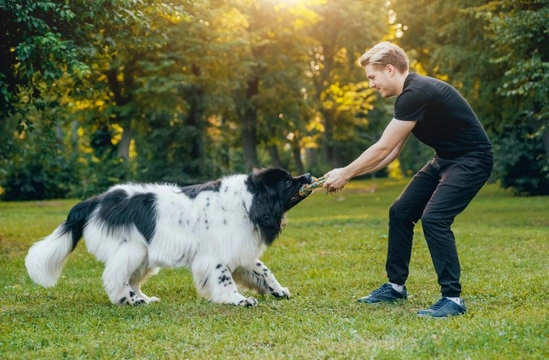
Five canine behavioural problems you’re probably making worse
While all dog owners start with good intentions in terms of how they will train and manage their dogs, the best laid plans can often run into bumps along the way, and training is not as easy as many people expect! The principles of dog training are universal, easy to understand and seem straightforward enough on paper – but putting them into practice, and spending the time and repetition needed to get your dog’s behaviour up to scratch aren’t always as easy as they first appear.
Additionally, if you go through all of the right steps and your dog simply doesn’t seem to be responding, is deliberately unruly or outright ignores you, it can be very hard to work out why this might be happening and what to do about it.
We’ve all seen – and possibly, been – that dog owner in the park who is frantically calling or running after a dog that has developed a serious case of selective deafness and won’t do as they are told – and knowing how to resolve behavioural issues and avoid creating them in the first place is not always obvious nor intuitive.
If your dog won’t follow certain commands, is inconsistent in their responses or can be bad mannered or pig headed on occasion, you are probably all too aware of this and find it annoying. However, many dog owners simply think that such problems are par for the course and that it is not possible to resolve them in adult dogs – when in fact, it is often our responses and behaviours as owners that can cause problems to develop, and make them worse once established.
In this article, we will look at five common canine misbehaviours that you’re probably making worse, and how to break the pattern and get your dog back on the right track. Read on to learn more.
Telling your dog off or getting exasperated continually
Many of us talk to our dogs throughout the day in a stream of consciousness that our dogs may well find comforting and reassuring, but they will also register it as background noise and will only be able to pick out the odd word that has particular meaning for them – like “dinner.”
Similarly, if you find walking your dog or doing something else with them stressful or if your dog is hard to manage, you might find that your tone of voice is continually exasperated, or that you are inadvertently speaking and responding to your dog for the benefit of human listeners, not your dog itself.
For instance, if your dog is digging at something that they shouldn’t be but you are unable to stop them, you may unconsciously find that you are saying to your dog something like “stop that now, you know that’s not allowed” so that human listeners know that you are trying to do something and are not ignoring the behaviour, even if your responses aren’t having the desired effect.
Speaking to your dog in an exasperated tone of voice, telling them off a lot or trying to explain their actions to them as you would a child are not effective approaches for dogs, and will lead to them tuning you out – so your words are simply like water off a duck’s back to your dog.
Chasing after your dog
If your dog runs off with something they shouldn’t have, pushes out of the door or chases off after something, they should still stop and come when called with the recall command. Recall is potentially the most challenging command to teach your dog and achieve reliable compliance with, and it is also one of the easiest to inadvertently sabotage!
If you chase your dog or otherwise engage with them rather than recalling them and working to fine-tune their skills in a controlled environment, the behaviour becomes a game for your dog – which is reinforced every time you respond in the same way.
Misusing their name
Your dog should recognise and respond to their name, and you should use it to get their attention and sometimes, as a precursor to a command. Using multiple nicknames, different tones of voice and again, using your dog’s name continually as part of conversation can all lead to your dog tuning their name out, and not recognising its meaning.
Use training treats to reinforce your dog’s understanding of their name, and use it sparingly and consistently.
Physically manipulating compliance
If your dog is pulling on the lead, won’t drop a toy or is sniffing about in something you want them away from and won’t obey your command, the next thing that you are likely to do is physically manipulate their compliance – by tugging on the lead, taking the toy from their mouth, or pushing them away from the source of stimulus.
Getting into a pattern of physically manoeuvring and manipulating your dog rather than teaching, enforcing and refreshing verbal commands will make your commands pointless, and unlikely to be effective.
Not viewing the big picture
When you are facing a certain behavioural problem or issue with your dog, it is important to take the big picture approach and not simply focus narrowly on the issue itself.
If your dog is destructive, unruly or runs off, are they getting enough appropriate stimulus and exercise? A dog that is bored or has no outlet for their energies will potentially act out in a wide range of different ways, and similarly, many other problems require you to take a holistic view of what is going on, and why your dog might be behaving as they are before you can hope to resolve the issue – whatever it happens to be.



